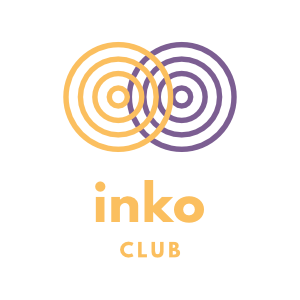The period between March and June is usually a high season for Employer Branding. Career fairs, lectures, meetups, open days. None of them happened this year. As universities, schools and career offices don’t operate in standard ways, most offline activities are not helpful either.
At the same time, there’s so much happening on the labor market now with both employers and candidates having high interest to stay in touch. Hence Employer Branding needs to switch to online or explore other ways of reaching their audience and targets. One of them could be to turn employees into ambassadors.
And that’s where Internal Comms comes into play.
Why Internal Comms?
Not only has Internal Comms direct access to employees, but it’s also responsible for employee engagement, strengthening the culture and ensuring internal understanding of the company direction, thus its mission, vision and strategy. It operates internally, building the basis for Employer Branding which then presents the internal image of the employer and the culture to the outside to attract the right people to join the company.
The key point for Employer Branding to work effectively is to understand what kind of candidates are the ones that the company would benefit from having as employees. For that, it needs to know what the real image of the company looks like and in which direction the management would like it to potentially shift. Internal Comms can give this culture-related information to Employer Branding.
Internal Comms can also help to keep employees informed on the Employer Branding activities which is crucial if you want to involve your people in your relations with candidates. Make sure Internal Comms and Employer Branding agree on how to communicate standard activities and how to handle special projects and needs. To make it smooth, Internal Comms should be an enabler here, giving Employer Branding as much independence in standard comms as possible, and offering guidance and hands-on support in any non-typical situation.
How employees can help?
When planning to engage employees into building the employer’s brand on the market, consider their help from different angles.
First of all, it’s about time to fully accept that employees are one of the company’s external comms channels that’s always on. They share their point of view with their family, friends and random online contacts. Making them pass on the content that helps the company is an opportunity you wouldn’t want to miss.
This leads to an observation that every employee could be an ambassador, it’s just that some of them would be the passive ones. They wouldn’t openly comment on the employer, but their presence by itself, especially the online one, could carry the message. They can boost your posts’ stats on social media (if not likes, then at least views). They can use your characteristic company portrait photo on LinkedIn which will then pop up in front of everyone’s eyes every time they engage in discussion. They can wear or use merchandise with your logo. And for sure they’ll answer their friends’ questions about what’s it like at work now.
When it comes to active ambassadors, their engagement is even more rewarding. They’re talkative, eager to share what’s going on, they come up with their own content and react on everything their colleagues post. Their energy is already there, but for now it’s shooting in different directions. If you orchestrate it, you’ll be able to both stream your message through them as well as get their feedback on what the market looks like today.
Yes, you should never forget to appreciate your employees as a source of information and inspiration. After all, they’re someone else’s candidates and prospects now, and they know what works for people like them.
Last but not least, the more you involve the people from the inside, the more complete and accurate the image on the outside will be. Having your employees actively promote the employer, talk about the work and the culture, allows candidates to really see, understand and to some extent even experience your culture. Learning about the company from those who work there, from friends, thus in an authentic way, makes candidates also trust the information more.
Ideas for your action plan
Building your employer’s brand with the help of your employees requires solid preparation before you go to the outside. Employer Branding and Internal Comms should work on it hand in hand as half of the work needs to happen still on the inside. It’s about building the common ground suitable for the current challenge.
Check the mood and understand your starting point
Apart from giving Employer Branding the general details on the culture, Internal Comms should reach out to employees to measure the current specific mood. Depending on how the company handled the crisis, the atmosphere might range from enthusiasm and hope, through disappointment, to sense of insecurity, indifference or even rage. With high engagement from management of all levels, but especially from the senior one, Internal Comms can help to mitigate the negative mood and strengthen positive emotions.
Knowing what’s going on allows to see to what extent employees are open to support the Employer Branding activities and what message can be brought up. What image employees will be willing to share? What’s their opinion about the employer after the recent crisis? What might motivate them to help you? What message will click with them now? Find it out to know what you can count on, and to make sure you don’t share with candidates an unreal image in clash with the reality.
Whatever the mood is, be open to public critique. And learn from it. Once your employees become active online, you’ll see what issues they bring up. Pass them on to Internal Comms, HR and management so that they can solve them. The amount and type of critique can tell you a lot about your real culture and its perception on the market. If it’s heavy, then your company has homework to do to fix the issues internally first. However, some slight critique can work for your benefit. The activity of your employees will look more authentic as it’s more normal to be imperfect than ideal.
While preparing for the critique, get ready for discussion on how your company handled the recent crisis. Candidates are highly interested to know how employers behaved during all phases of the pandemy. They will want to see it through the eyes of your employees and if you enable this view, you’ll be perceived as transparent.
Brainstorm with employees
The new situation requires that you review your Employer Branding strategy and adjust it to the current challenges. Fancy some cool tips, right? Don’t waste your time on looking for valuable trustworthy external studies on the current situation to give you such checked hints. There are none yet.
Instead, reach out to your employees, organize a couple of focus groups and ask them for their ideas. It’s the quickest way to do research, get feedback, analyze it and come up with conclusions.
Check with them where and how to reach out to candidates. They for sure know where they themselves could still be contacted by a different employer and what format would attract them in both the online and the offline world.
Check with them also what message makes sense to share now. What do people care about today? What will candidates, like your employees, find appealing? And what are the topics you should avoid for now?
Exploit social sharing
Depending on your company’s social media policy or approach, you might have been more or less open to your employees’ activity online. Now is the time to stretch your limits and explore this area more than ever. Your employees do it anyway, remember?
Inform employees on what and how they’re encouraged to promote themselves. Give them topics and ready to use content about your internal events, campaigns, activities, research, stories or even survey results. Include simple indication on what’s good to go to the outside. If your internal platform has social media share buttons built-in, use them. Give your employees hints on creating their own content as well and consider launching some social media challenge for them. And of course, make sure they also engage with your own official content.
Don’t forget to follow what’s going on. For that, advise your employees to use specific hashtags that will help you to track their activity. Measure, see what works, nurture further and engage yourself with your employees’ content.
Your referral program
Now might also be the right time to remind everyone about the referral program that you have, or launch one if you didn’t have it so far. Make sure it’s applicable in the current environment, the procedure is easy to complete and employees have all the details, including about the open roles. Again, Internal Comms is there to help you reach out to employees through an engaging information campaign.
Take it, don’t leave it
To sum up, there are two key ways in which Internal Comms can support Employer Branding in the current situation influenced by the crisis.
First of all, it’s through ensuring the proper understanding of what the company culture and the current employees’ mood look like and helping to translate them into an accurate image of the employer.
Secondly, it’s through involving employees as ambassadors and being in constant touch with them to build an Employer Branding strategy that makes sense here and now. And then to execute it.
Whatever happens in the future, may today’s strong need for support turn into efficient partnership and become your standard practice for Internal Comms and Employer Branding daily cooperation.




